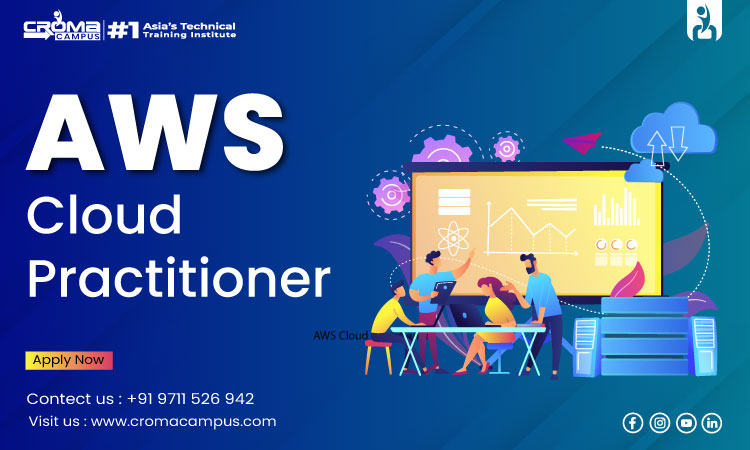Introduction
Amazon Web Services (AWS) is a leading cloud platform, offering over 200 comprehensive services from global data centers. The AWS Cloud Practitioner Essentials course introduces beginners to the fundamental concepts of cloud computing and AWS. By understanding the basics, professionals like AWS Cloud Practitioner and businesses can leverage AWS to innovate, reduce costs, and scale efficiently.
This guide explores the core concepts, benefits, and practical applications of AWS.
All About AWS Cloud Practitioner Essentials
Amazon Web Services (AWS) is a comprehensive and widely adopted cloud platform. AWS offers over 200 fully featured services from data centers globally. Millions of customers use AWS to lower costs, become more agile, and innovate faster. AWS Cloud Practitioner Essentials is an introductory course. This course is designed for individuals who want to learn about cloud computing and AWS and work as AWS Solution Architect Associate or other equivalent roles.
What is Cloud Computing?
Cloud computing is the delivery of computing services over the internet. These services include storage, databases, servers, networking, software, and more. Instead of owning physical data centers or servers, you can access technology services, like computing power and storage, on an as-needed basis from a cloud provider like AWS.
Why AWS?
AWS is the most popular cloud platform due to its wide range of services and global reach. It is reliable, scalable, and cost-effective. Whether you’re running applications that share photos to millions of mobile users or supporting the critical operations of your business, AWS provides the infrastructure to meet your needs.
Key Concepts of AWS
· Regions and Availability Zones: AWS has a global infrastructure, divided into regions and availability zones. Regions are geographic locations, while availability zones are isolated locations within those regions. This design ensures high availability and fault tolerance.
· Compute Services: The most well-known service is Amazon EC2 (Elastic Compute Cloud). EC2 allows you to rent virtual servers on which you can run your applications. It provides various instance types optimized for different tasks.
· Storage Services: Amazon S3 (Simple Storage Service) is designed for storing and retrieving any amount of data, at any time, from anywhere on the web. S3 is secure, scalable, and low-cost, making it a popular choice for many businesses.
· Database Services: AWS offers a range of database services. These include Amazon RDS (Relational Database Service), Amazon DynamoDB (a NoSQL database), and Amazon Redshift (a data warehouse service). These services are fully managed, meaning AWS handles routine database tasks.
· Networking Services: Amazon VPC (Virtual Private Cloud) lets you create a private network within the AWS cloud. You can control your virtual networking environment, including IP addresses, subnets, and route tables.
Benefits of AWS
1. Cost-Effective: With AWS, you only pay for the services you use, without long-term contracts or upfront costs. This pay-as-you-go pricing model makes it affordable for businesses of all sizes.
2. Scalability and Flexibility: AWS allows you to scale your resources up or down based on demand. This flexibility ensures professionals like the AWS Solution Architect Associate only use the resources they need, thereby, reducing waste and saving money.
3. Security: AWS offers a robust security infrastructure. It includes data encryption, identity and access management, and compliance with various industry standards. AWS continuously monitors and safeguards your infrastructure.
4. Global Reach: AWS provides a vast global network of regions and availability zones. This ensures your applications can be deployed close to your users, reducing latency and improving performance.
Common Use Cases
· Web Hosting: AWS can host websites and web applications, providing the infrastructure needed to handle traffic and store content.
· Data Backup and Recovery: AWS offers secure and reliable storage solutions for backing up data and disaster recovery.
· Big Data Analytics: AWS provides tools like Amazon EMR (Elastic MapReduce) and Amazon Athena to process and analyse large datasets efficiently.
· Machine Learning: AWS has services like Amazon SageMaker, which enables developers to build, train, and deploy machine learning models quickly.
Getting Started with AWS
Ø Create an AWS Account: Signing up for an AWS account is the first step. AWS offers a free tier for new users, providing limited access to many services at no cost.
Ø Explore the AWS Management Console: The console is your web-based interface to access and manage AWS services. It’s user-friendly and provides comprehensive documentation and tutorials.
Ø Take AWS Training and Certification: AWS offers various training courses and certifications. The AWS Cloud Practitioner Essentials course is a great starting point, covering foundational cloud concepts and AWS services.
Ø Experiment with AWS Free Tier: Use the free tier to experiment with different services. This hands-on experience will help you understand how AWS works and how it can benefit your organization.
Conclusion
AWS Cloud Practitioner Essentials provides a solid foundation for anyone interested in cloud computing and AWS. By understanding the basics, you can start leveraging AWS to drive innovation and efficiency in your organization. Whether you are an IT professional, a business leader, or a student, gaining knowledge of AWS opens up a world of possibilities.




